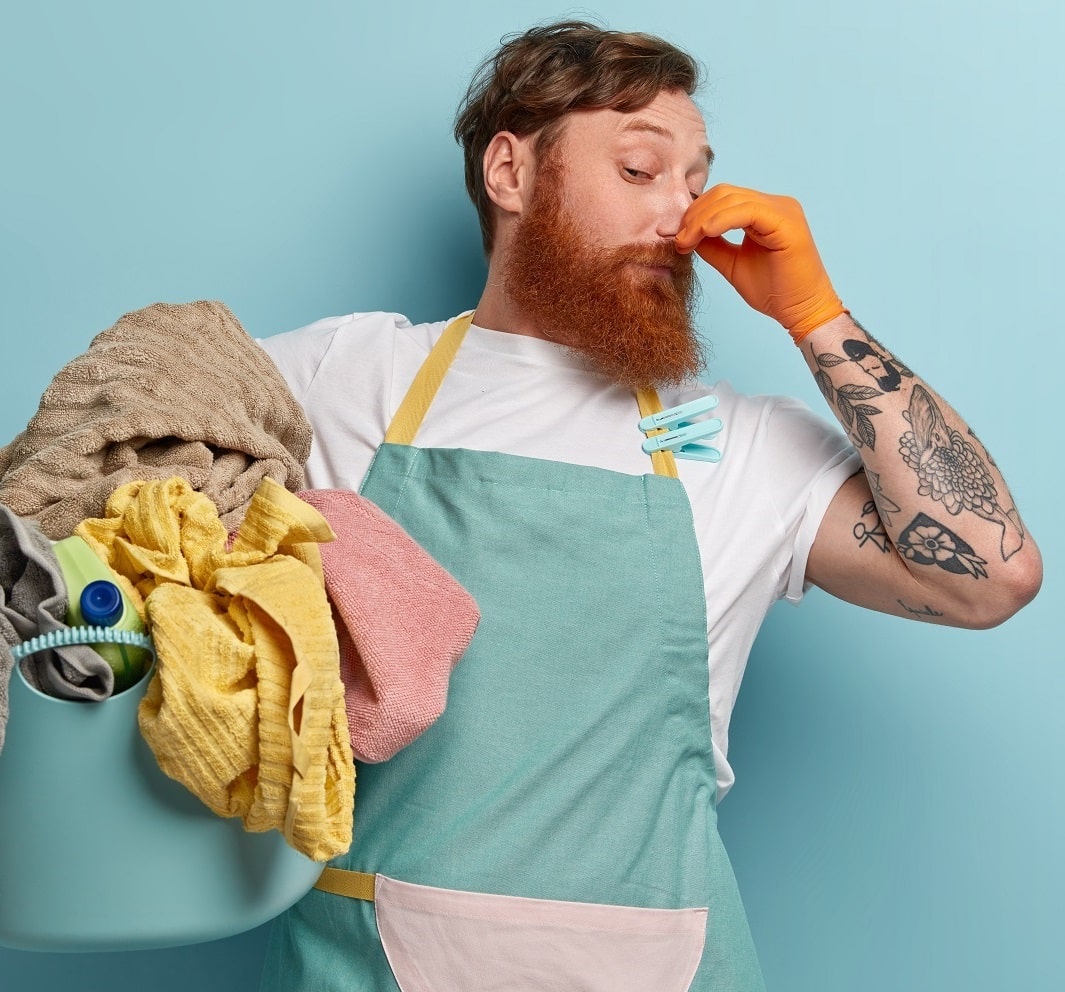
4 Tips to Stop Bacteria Growing in Your Cloth or Sponge
Share

Have you been here…. pulling out a smelly cloth from your washing basket or under your sink, or finding a dodgy-looking sponge you can’t recall the last time you used?
This leads to the next question, is that cloth or sponge safe to clean with, even after the washing machine?
We've done the research below, and have 4 solid tips for you.
Your standard kitchen dish cloths and sponges are dirtier than you think. This means you could be adding millions of bacteria to your kitchen bench each time you wipe it.
Reducing germs and bacteria has become more important than ever these months, as we try to stay on top of our health and keep a strong immune system.
You may think, why do I need to wash my cloths and sponges when they are in soapy water all day?

The sponges and cloths pick up much more than just soap and water. Some jaw-dropping test results discovered more than 300 different types of bacteria on one sponge – at a density of as much as 45 billion per square centimetre.
While we do need essential bacteria, you definitely want to be cleaning your cloths and sponges!
If you’re not completely convinced just yet, think about all the different uses you put your cloth and sponge through.
Many people use the same cloth or sponge to wash dishes as they do for cleaning up the bench after meal prep, which means you’re using the same product to clean up raw food as you are to scrub your plates and bowls.
All these bacteria can potentially make you sick and cause bacterial diarrhea.
So what is the best way to clean your cloths & sponges and reduce bacteria in them?
1) Don’t feed your cloth with dangerous bacteria

Don’t use your sponge to scrub off chunky food debris or wipe up fresh meat juices.
To avoid cross-contamination, wash your hands (properly) and give different sponges their own jobs — like cleaning only your counter, floor or dishes. Choose cloths that have different colours so you can easily tell them apart when using them for different tasks.
Or cut a corner off to add further differentiation.
2) Wash your cloths and sponges in the dishwasher

This is the simplest solution, and you are most likely already running the dishwasher.
All you have to do is give it a good rinse and squeeze after washing the dishes (and the inside of your sink!) before placing it in the top rack of your dishwasher. (You can throw any dish scrubber you use in there, too.).
Be sure to use the heated dry option if you have it, all that heat and steam does wonders to kill off bacteria.
3) Clean your cloth and sponge in the microwave

If you are not “blessed” with a dishwasher you can also use the microwave. This is perfect for when you want to give your cloth or sponge a quick but efficient clean.
Rinse the cloth or sponge for any foodbits or crumbs before placing them in the microwave.
Before you zap, make sure your sponge doesn’t contain any metallic material or have a plastic scour pad attached.
Make sure the sponge or cloth is wet (not dripping, just saturated) before placing it in the microwave, as otherwise there is a risk of igniting it.
Then zap it for around 60-90 seconds.
Heads up: it will be hot so be careful when you take it out.
A bit of scientific proof:
In a 2008 study, Manan Sharma, a microbiologist who studies foodborne pathogens with the U.S.D.A., and his colleagues soaked sponges in ground beef at room temperature for two days to get them extra bacteria-y and then compared common cleaning methods. He found that microwaving and running them through the dishwasher were the most effective killers of some bacteria, mold and yeast.
The ultimate cloth cleaning tip: Wash them in dishwasher and then transport them to the microwave for a zap. The ultimate bacteria killer!
4) Clean your sponge or cloth in vinegar

If you’re looking for a little more “natural” option, a good soak in full-strength vinegar (which has a higher concentration of acid than regular white vinegar) will also do the trick.
First, remove any solid particles and give the sponge a good rinse and squeeze before dropping it into a container filled with enough vinegar that the sponge is completely submerged.
Allow it to soak for a good five minutes before rinsing and squeezing.
Pro tip: Wear gloves for this, since the extra acid in your vinegar-soaked sponge can sometimes irritate skin. (Also, this vinegar should explicitly be used for cleaning, not eating. It's unsafe to digest—and probably tastes terrible, anyway.)
TIP: Try to sanitise your sponge or cloth every day, and be sure to swap it out with a fresh one when it needs it — even with regular cleaning, a sponge won't last forever. Toss your sponge the instant it smells funky — that means something nasty is probably brewing.
You may have wondered why a cloth smells?

Moraxella osloensis is primarily responsible for the stench of dirty laundry, and it may also be the reason that your sponge eventually emits a funky odour. The odour is a compound produced by the bacterium’s metabolism. It eats fat. It excretes fat. And that fatty excrement stinks.
You up for more scientific tips on cloths and bacteria?
Dean Cliver, a professor of food safety at the University of California, found in a study he conducted, that cellulose in wood (which is the base of our Eco cloths) absorbs bacteria but will not release it. ''We've never been able to get the bacteria down in the wood back up on the knife to contaminate food later,'' he said.
Plastic absorbs bacteria in a different way. ''When a knife cuts into the plastic surface, little cracks radiate out from the cut,'' Professor Cliver said. The bacteria, he said, ''seem to get down in those knife cuts and they hang out. They go dormant. Drying will kill, say, 90 percent of them, but the rest could hang around for weeks.''

Since the eco cloths are made from wood-pulp and cotton and dry more quickly than your normal cotton cloth or sponge, bacteria are less happy to breed in there.

